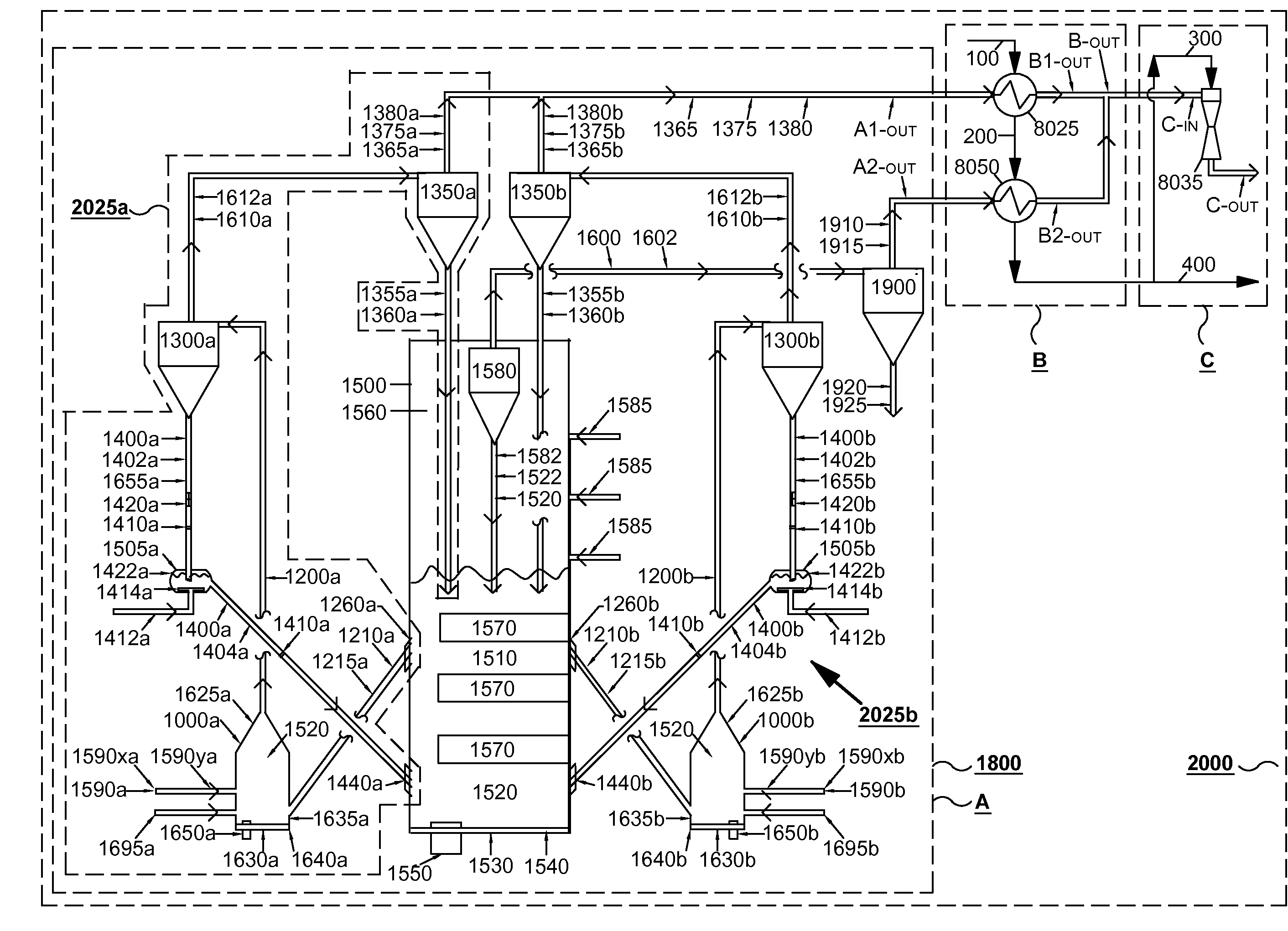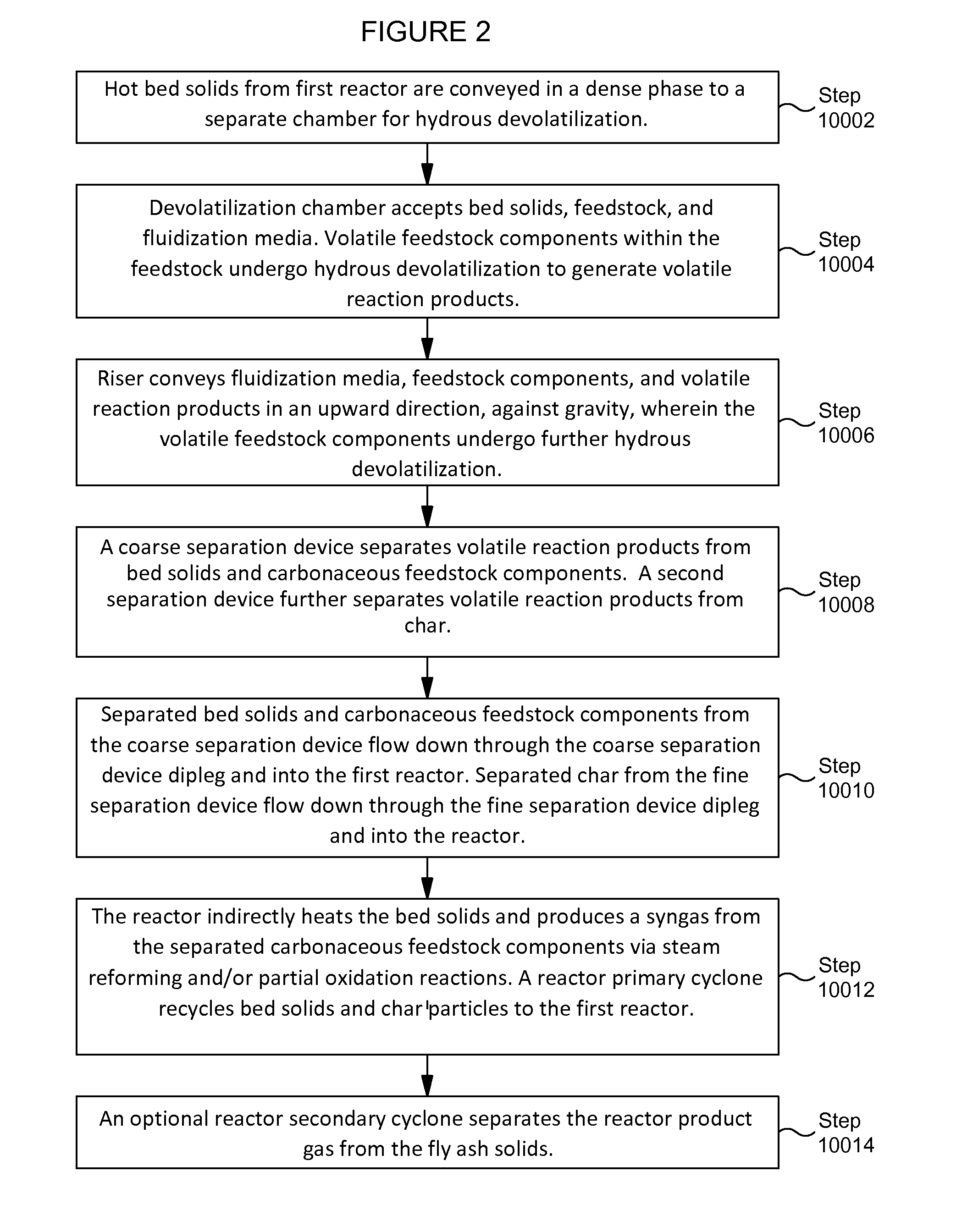System and method for flexible conversion of feedstock to oil and gas
a feedstock and flexible technology, applied in the field of system and method for flexible conversion of feedstock to oil and gas, can solve the problems of limiting the commercialization and deployment affecting the commercialization of many of these technologies, and increasing the cost of feedstock for larger feedstock throughput units
- Summary
- Abstract
- Description
- Claims
- Application Information
AI Technical Summary
Benefits of technology
Problems solved by technology
Method used
Image
Examples
Embodiment Construction
Reactor
[0032]FIG. 1 illustrates an energy integrated continuous feedstock-to-crude oil conversion process (2000) comprised of three process sequence steps: Sequence Step A, Hydrous Devolatilization and Thermochemical Conversion (A); Sequence Step B, Heat Removal and Recovery (B); and, Sequence Step C, Vapor and Gas Pressurization (C). A fourth step, Sequence Step D, Vapor and Gas Clean-up and Product Recovery (D) is not shown but can be implemented using systems and methods known to those skilled in the art.
[0033]The preferred embodiment, as depicted in FIG. 1, illustrates Sequence Step A, Hydrous Devolatilization and Thermochemical Conversion (A) comprising a feedstock conversion system (1800) that includes a reactor (1500) and a first and second hydrous devolatilization and solids circulation subsystem (2025a &2025b).
[0034]The preferred embodiment of Sequence Step B, Heat Removal and Recovery (B) includes a sharing of heat, in the form of steam (200), generated from a water source...
PUM
| Property | Measurement | Unit |
|---|---|---|
| temperature | aaaaa | aaaaa |
| atmospheric pressure | aaaaa | aaaaa |
| pressures | aaaaa | aaaaa |
Abstract
Description
Claims
Application Information
 Login to View More
Login to View More - R&D
- Intellectual Property
- Life Sciences
- Materials
- Tech Scout
- Unparalleled Data Quality
- Higher Quality Content
- 60% Fewer Hallucinations
Browse by: Latest US Patents, China's latest patents, Technical Efficacy Thesaurus, Application Domain, Technology Topic, Popular Technical Reports.
© 2025 PatSnap. All rights reserved.Legal|Privacy policy|Modern Slavery Act Transparency Statement|Sitemap|About US| Contact US: help@patsnap.com



